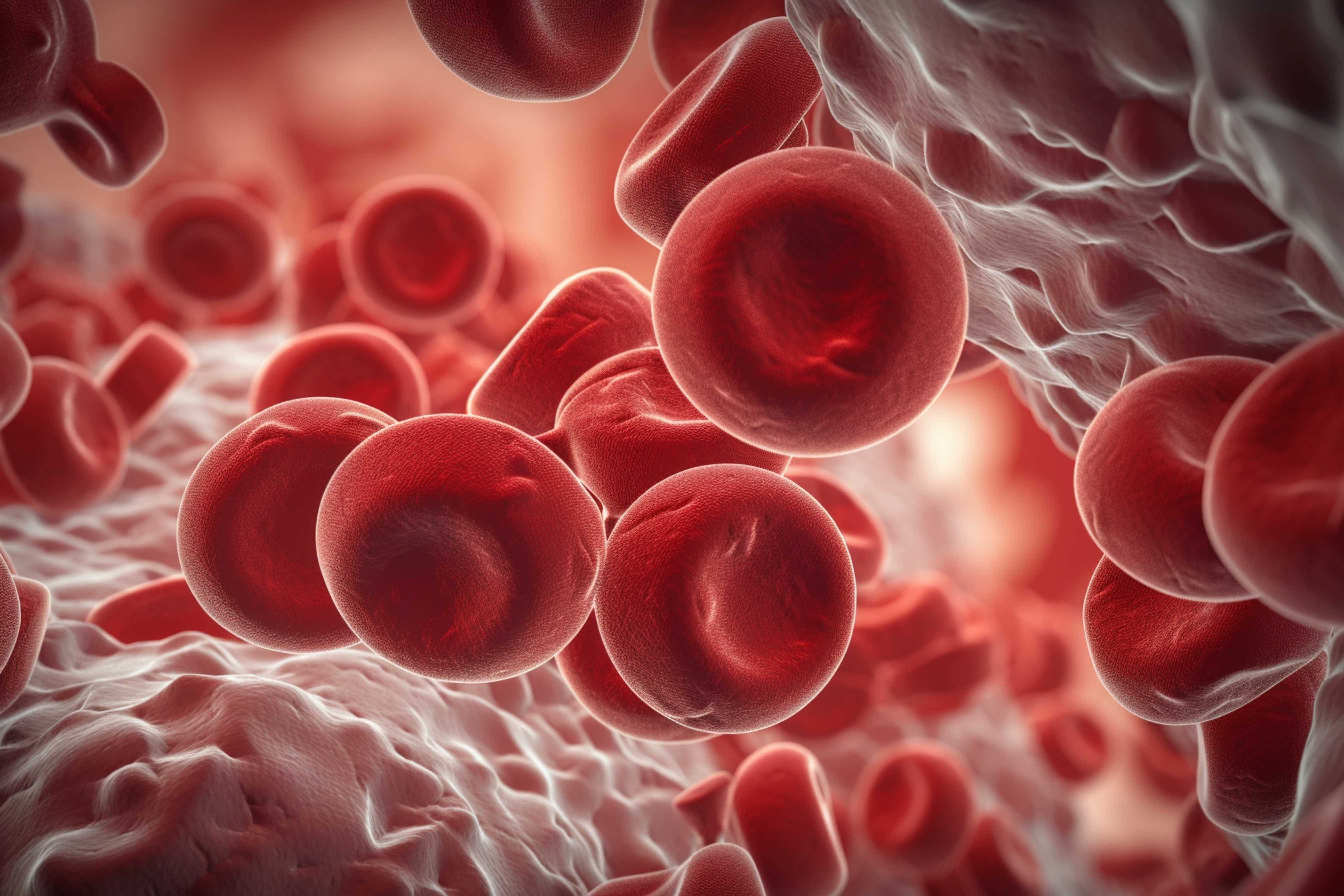News
Article
Immunotherapy Sequences May Lead to Disease Resistance/Relapse in Myeloma
Author(s):
BCMA and GPRC5D loss in patients with multiple myeloma may lead to resistance to continuous treatment with anti–BCMA and anti–GPRC5D agents.
This article was originally published by CancerNetwork.
Sequential treatment with immunotherapy may produce an “evolutionary bottleneck” affecting underlying disease characteristics in multiple myeloma, which can potentially lead to disease relapse and treatment resistance, according to findings from a presentation at the 2023 International Myeloma Society Annual Meeting.1
Blood Cells | Image credit: Катерина Євтехова - stock.adobe.com.jpg

The loss of B-cell maturation antigen (BCMA) and G protein–coupled receptor, class C, group 5, member D (GPRC5D) in patients with multiple myeloma presents a challenge to the continued use of anti-BCMA and anti-GPRCD5D therapies as the loss of antigen is believed to lead to resistance of these medications and thus disease relapse.2
According to Leo Rasche, MD, researchers have identified biallelic hits to genes that code for immunotherapy targets in these patients and believes they account for the majority of relapses in patients on BCMA-targeted immunotherapies. This is the tumor intrinsic mechanism related to antigen loss, Rasche explained, that is a main driver of resistance despite encouraging response rates from these therapies.
At the IMS meeting, Rasche presented a patient case of an individual with relapsed/refractory multiple myeloma who had been treated for more than 10 lines of therapy; they exhausted every treatment available at the University Hospital Wurzburg, Germany. According to Rasche, assistant professor in the Department of Internal Medicine at the University Hospital, each line of therapy left some tracks in the genome of this patient, suggesting the same for other heavily relapsed/refractory patients with multiple myeloma. In order to assess this patient, they conducted serial whole genomic sequencing (WGS) and immunohistochemistry (IHC) studies, which showed a number of results in this patient.
In the first-line of therapy, the patient responded well to tandem melphalan (Alkeran) chemotherapy and had a complete remission. Looking back on this patient’s genomics after 10 lines of therapy showed a melphalan signature in 10% of the mutations. After the patient’s first relpase, they were treated with lenalidomide (Revlimid)-containing therapy which left behind several CRBN mutations that mediate resistance to the treatment. The patient then went on to have several different proteasome inhibitor-based salvage therapies and more lenalidomide, but did not respond.
It was after this stretch of immunomodulatory drugs that the patient was enrolled in a clinical study for a BCMA bi-specific antibody that he did have another response of complete remission. Yet, 10 months later the WGS showed biallelic BCMA deletion at 16p, which confirmed to Rosche the loss of antigen and thus further resistance to the BCMA-targeted bi-specific.
Salvage therapy was adjusted to carfilzomib (Kyprolis), lenalidomide (Revlimid), and dexamethasone and continued with triplet therapies until he was given belantamab mafodotin (Blenrep) in the ninth line and talquetamab (Talvy) in the tenth line. Prior to his tenth line of therapy, more BCMA loss was discovered that impacted his response to belantamab, but even on talquetamab after a year and a half of response to the novel therapy, he relapsed and a GPRC5D deletion was seen. Post anti-BCMA and anti-GPRC5D therapies deletion biallelic TNFRSF17 loss was seen throughout the patient’s treatment cycle. What they concluded was that by the end of treatment, homozygous BCMA deletion was persistent, which showed the evolutionary bottlenecks created by sequencing the drug as monotherapies.
“[Since it] was sequential immunotherapy, the second immunotherapy targeting GPRC5D was selected for GPRC5D-negative clones, [but we still only saw] persistent [antigen] loss, because finally, we have double-negative cells in this patient [at this point],” explained Rosche.
These findings suggest, according to Rosche, that multi-specific strategies will be needed to avoid the antigen loss created by sequential mono-immunotherapies. Moreover, the importance of looking at BCMA loss as a risk factor could be possible as BCMA resides in the NF-κB, that is important to the survival of myeloma cells. Still, further research is needed to assess the potential of this as risk factors for patients, but this highlighted the potential for WGS during the patient’s treatment as a way to diagnose the patient as well.
References
- Rasche L. Sequential and persistent loss of BCMA and GPRC5D after bispecific antibodies in multiple myeloma revealed by whole genome sequencing. Presented at: International Myeloma Society 20th Annual Meeting and Exposition; September 27-30, 2023; Athens, Greece. OA-24.
- Zhou X, Rasche L, Kortüm KM, et al. BCMA loss in the epoch of novel immunotherapy for multiple myeloma: from biology to clinical practice. Haematologica. 2023;108(4):958-968. doi:10.3324/haematol.2020.266841




